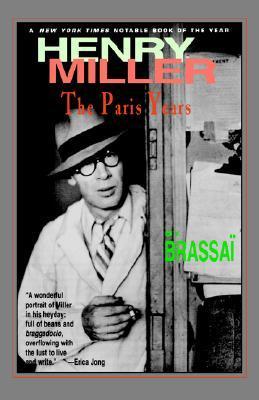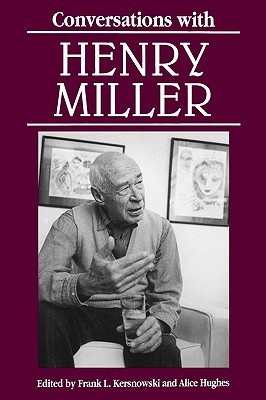
Henry Miller: The Paris Years
Book Description
A literary icon emerges from the shadows of a bohemian Paris, where dreams ignite and passions collide. Through Brassaï's lens, the chaotic energy of Henry Miller’s life unfolds—a tempest of art, love, and rebellion against the mundane. In smoky cafés and vibrant streets, Miller conquers his demons, battling societal norms and crafting masterpieces that challenge the very fabric of existence. The electric world of 1930s Paris comes alive, pulsing with intrigue and longing. Will Miller's relentless pursuit of authenticity lead him to freedom, or will it consume him? Step into the heart of a creative revolution and discover what it truly means to live.
Quick Book Summary
"Henry Miller: The Paris Years" by Brassaï immerses readers in the bohemian heart of 1930s Paris, chronicling the transformative period in Henry Miller’s life when he honed his craft, rebelled against convention, and forged a vibrant artistic identity. Through intimate encounters in smoky cafés, impassioned debates, and wild escapades with fellow creatives, Miller emerges as both a product and a challenger of his era. Brassaï’s first-hand account captures the grit and glamour of Parisian nightlife, offering a candid look at Miller’s struggles with poverty, censorship, and societal rejection. With evocative prose and vivid observation, the memoir reveals how Miller’s relentless quest for authenticity shaped not only his literary masterpieces but also the broader currents of modern literature and personal freedom.
Summary of Key Ideas
Table of Contents
The Transformative Energy of Bohemian Paris
Brassaï’s portrait of Henry Miller during his Paris years situates the writer amid the explosive artistic ferment of 1930s bohemian Paris. The city itself acts as both backdrop and catalyst for Miller’s creativity, with countless cafés, hidden ateliers, and bustling streets serving as crucibles for his waking dreams and nocturnal adventures. Brassaï vividly evokes this milieu, where ideas flowed as freely as wine and the boundaries between art and life were porous. In this charged atmosphere, Miller found inspiration in the city’s vitality, the charisma of its denizens, and the possibilities of reinvention.
Artistic Rebellion and Literary Creation
At the heart of the book lies Miller’s unyielding rebellion—against bourgeois propriety, literary convention, and the stifling expectations of society. Miller’s navigation of poverty and obscurity illustrates his courage in pursuing a different path. Rather than bend to commercial or public taste, he chooses personal truth and artistic honesty, channeling his frustrations and desires into raw, experimental prose that later became synonymous with his name. Brassaï details Miller’s determination to authentic self-expression, revealing the inner battles that would birth works like "Tropic of Cancer."
Struggle Against Societal Norms and Censorship
Integral to Miller’s Paris years are his intricate, often turbulent relationships—with peers, lovers, and mentors—that both sustain and challenge him. The memoir sheds light on Miller’s interactions with figures like Anaïs Nin, as well as a wider network of artists and writers. These relationships force Miller to confront his insecurities, question his ideals, and search for genuine connection amidst the chaos of artistic life. Love, rivalry, and camaraderie all intermingle, adding depth to his quest for an authentic existence.
Complex Relationships and the Search for Authenticity
Brassaï also explores the significant obstacles Miller faced—particularly the suffocating grip of censorship and moral judgment. The threat of expulsion and social ostracism hangs over Miller, whose work courts scandal with its frankness and sensuality. Yet it is these very challenges that forge his identity as both outsider and innovator. Miller's defiance becomes a symbol of artistic autonomy, inspiring contemporary and future generations to challenge taboos and push the boundaries of creative expression.
The Enduring Impact of Creative Freedom
Ultimately, Brassaï’s memoir celebrates Miller’s enduring influence, linking his Parisian odyssey to broader themes of creative freedom and the transformative power of art. By chronicling Miller’s struggles and triumphs, Brassaï offers a window into the birth of a literary icon whose restless search for meaning shaped the landscape of twentieth-century literature. The book concludes with reflections on the lasting legacy of Miller and the bohemian spirit of Paris—a testament to the necessity and risks of living, and writing, boldly.
Download This Summary
Get a free PDF of this summary instantly — no email required.





